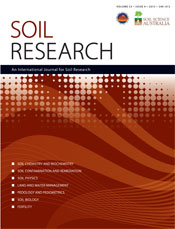SR14062Soil carbon sequestration in cool-temperate dryland pastures: mechanisms and management options
As a major form of land use, permanent pastures are of great interest as a means for mitigating greenhouse gases. We review the fundamental knowledge of the complex factors that regulate soil organic carbon dynamics in pastures. These insights help us interpret the often highly variable results from regional-specific studies as well as identify best management options for promoting carbon sequestration in pastures.




